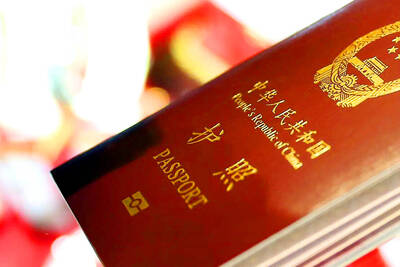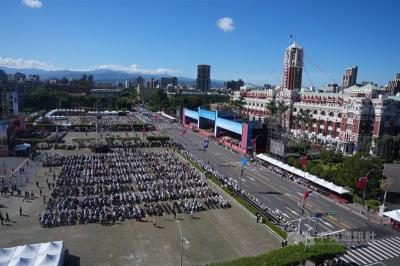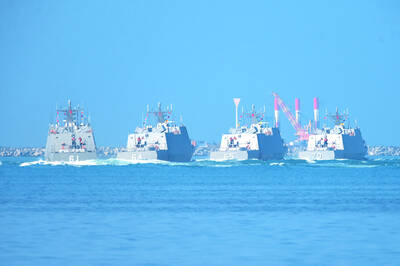Fresh human cases in eastern China of a new strain of bird flu signal the potential for “a new epidemic wave” of the disease in coming winter months, scientists said on Thursday.
The strain, known as H7N9, emerged for the first time in humans earlier this year and killed about 45 of the 135 people it infected before appearing to peter out in China during the summer.
However, a new case this month in a 35-year-old man from Zhejiang Province shows that the virus “has re-emerged in winter 2013” and “indicates a possible risk of a larger outbreak of H7N9 this winter,” according to Chinese researchers writing in the online journal Euro surveillance.
Flu experts around the world have been warning that despite the marked drop off in cases during the summer months, the threat posed by H7N9 avian influenza has not passed.
Ab Osterhaus, a leading virologist based at the Erasmus Medical Center in the Netherlands who has been tracking the virus, said earlier this month: “We’re bracing for what’s going to happen next.”
The first scientific analysis of probable transmission of the new flu from person to person, published in the British Medical Journal in August, gave the strongest proof yet that it can jump between people and so could potentially cause a human pandemic.
Another study published in August identified several other H7 flu viruses circulating in birds that “may pose threats beyond the current outbreak.”
In a detailed analysis of the 35-year-old man’s case, scientists from the Zhejiang Provincial Center for Disease Control and Prevention said it differed from previous ones in that it was a severe case in a younger patient “with no obvious underlying diseases and no obvious recent direct contact with live poultry.”
Most laboratory-confirmed cases in the past had been people over the age of 60, many of whom said they had had recent exposure to poultry, generally at live bird markets.
The case of the 35-year-old man, plus another H7N9 infection confirmed just a day ago, suggest the virus “has apparently continued to circulate in an animal reservoir during the summer,” the researchers said.
The second case is a 67-year-old man with no underlying disease whose work included transporting and selling poultry.
The researchers said that based on China’s experience in the spring, when there were 30 cases in March and 88 in April, the best approach would be to maintain enhanced and expanded surveillance in human and animal populations to make sure any new cases of H7N9 are picked up and diagnosed swiftly.
“In particular, enhanced surveillance in poultry would be helpful if it can identify the H7N9 virus and inform early control measures before human infections occur,” the Chinese scientists said. “Hygiene campaigns and closure of live poultry markets can reduce the risk of severe cases and deaths.”

The Ministry of the Interior (MOI) is to tighten rules for candidates running for public office, requiring them to declare that they do not hold a Chinese household registration or passport, and that they possess no other foreign citizenship. The requirement was set out in a draft amendment to the Enforcement Rules of the Public Officials Election and Recall Act (公職人員選舉罷免法 ) released by the ministry on Thursday. Under the proposal, candidates would need to make the declaration when submitting their registration forms, which would be published in the official election bulletin. The move follows the removal of several elected officials who were

The Republic of China (ROC) is celebrating its 114th Double Ten National Day today, featuring military parades and a variety of performances and speeches in front of the Presidential Office in Taipei. The Taiwan Taiko Association opened the celebrations with a 100-drummer performance, including young percussionists. As per tradition, an air force Mirage 2000 fighter jet flew over the Presidential Office as a part of the performance. The Honor Guards of the ROC and its marching band also heralded in a military parade. Students from Taichung's Shin Min High School then followed with a colorful performance using floral imagery to represent Taiwan's alternate name

FOUR DESIGNATED AREAS: Notices were issued for live-fire exercises in waters south and northwest of Penghu, northeast of Keelung and west of Kaohsiung, they said The military is planning three major annual exercises across the army, navy and air force this month, with the navy’s “Hai Chiang” (海強, “Sea Strong”) drills running from today through Thursday, the Ministry of National Defense said yesterday. The Hai Chiang exercise, which is to take place in waters surrounding Taiwan, would feature P-3C Orion maritime patrol aircraft and S-70C anti-submarine helicopters, the ministry said, adding that the drills aim to bolster the nation’s offshore defensive capabilities. China has intensified military and psychological pressure against Taiwan, repeatedly sending warplanes and vessels into areas near the nation’s air defense identification zone and across

A Chinese takeover of Taiwan would severely threaten the national security of the US, Japan, the Philippines and other nations, while global economic losses could reach US$10 trillion, National Security Council Deputy Secretary-General Lin Fei-fan (林飛帆) wrote in an article published yesterday in Foreign Affairs. “The future of Taiwan is not merely a regional concern; it is a test of whether the international order can withstand the pressure of authoritarian expansionism,” Lin wrote in the article titled “Taiwan’s Plan for Peace Through Strength — How Investments in Resilience Can Deter Beijing.” Chinese President Xi Jinping’s (習近平) intent to take Taiwan by force